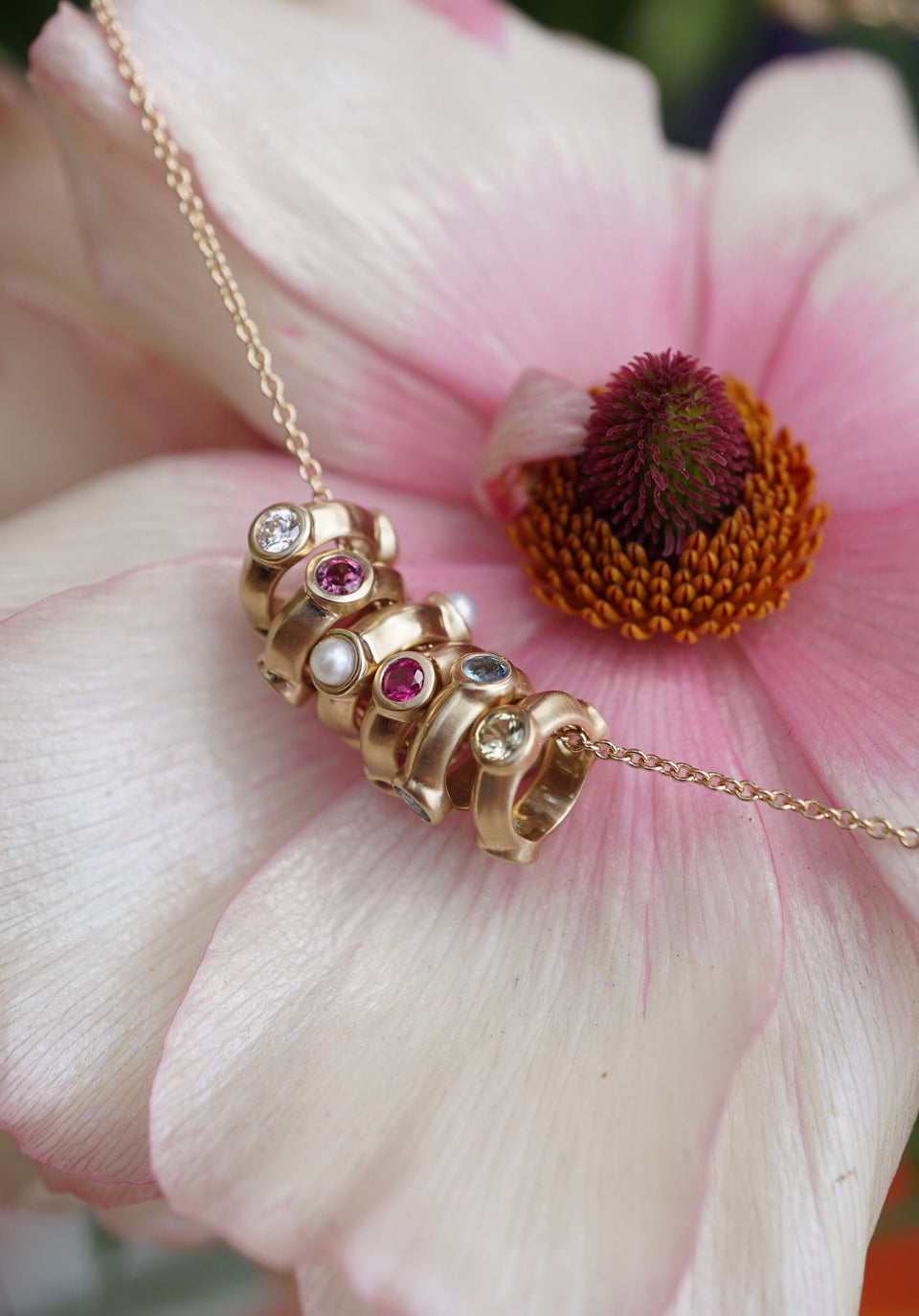Hi there, my name is Iselin. I like putting flowers in my food, reading books (often the same ones over and over) and share my passion for a healthy lifestyle and wholesome practices. I am a yoga and meditation teacher, wellness advocate and cookbook author from Norway, currently living between Norway and Byron Bay in Australia. I primarily teach yin yoga and yoga for women, and I am very passionate about sharing my knowledge around women’s health and wellness and helping other women tuning into their female power.

In December last year, I completed and self-published my book A Book of Nourishment. It’s a book that celebrates plant-based food and the beauty of homemade food. The book contains more than 30 delicious recipes, ranging from raw cakes, coconut-based ice creams, homemade chocolate, bliss balls, elixirs, and more. There is also a little chapter on fermentation, guiding you through the process of making your own kombucha and sauerkraut. My hope for this book is for it to be an inspiration for people to eat more of foods that are truly nourishing and good for their bodies, while not compromising taste or pleasure.
“Through studying yoga and various forms of nutrition and healing modalities, I’ve come to understand food and nourishment in different ways, and I believe food truly is something that nourishes us on several levels. We eat for fuel, for energy, mental clarity, and for the body's ability to function and be healthy. We eat for pleasure and for social reasons. As we begin to understand food as nourishment on different levels; spiritual and emotional as much as physical, we also learn to eat in ways that support our minds and our bodies through different phases, seasons, and cycles of our lives. To me, this is an intelligent way of eating and one that resonates with every cell in my body and my entire being”.

Eating in light of the moon | The seasons of the female cycle
Not many of us were taught as children or young adults that the cycles of men and women are very different. Men cycle with the sun, and their cycle lasts for 24 hours from start to finish. Women, however, cycle with the moon, and the female cycle, just like the moon, has a median duration of 28 days. For women, each day of her cycle is different from the other. As a result, women need different ways of care and nurturing throughout the month.
The menstrual cycle is a series of natural changes in the female body. It is an orderly process of preparing women’s bodies for pregnancy. During each cycle, and egg develops and releases from the ovaries, and the lining of the uterus builds up. If conception doesn’t occur at the time of ovulation, the uterine lining sheds as a menstrual period and the cycle begins again.
The female cycle happens as a response to interactions of different hormones produced by the hypothalamus, the pituitary gland, and the ovaries. These hormones include estrogen, progesterone, follicle-stimulating hormone (FSH), luteinizing hormone (LH), and testosterone. Like nature, the menstrual cycle has two distinct seasons, or phases, the follicular or proliferative phase, and the luteal, or secretory phase. Still, we usually separate the menstrual cycle into four different phases; the follicular phase, the ovulatory phase, the luteal phase, and the menstrual phase. The length of the cycle is defined by the first day of bleeding of one cycle, to the first day of bleeding in the next cycle. The menstrual cycle can vary in length, but generally, a cycle lasts from 21 to 35 days, with a median duration of 28 days.
The varying ratios of hormones that occur in the female body throughout the month determine what happens inside her body from a reproductive standpoint, and creates the four different phases. However, the hormonal changes also determine how she feels emotionally and physically at different stages throughout the month.
Nourishment for the Different Phases
The first phase of the female cycle is menstruation and begins at day one of her period. In nature, this phase aligns with winter (yearly cycle), the new moon (monthly cycle), and midnight (daily cycle). Many women may feel familiar with the feelings of introspection and the need to be more still during the first phase of the menstrual cycle. Menstruation is a raw and vulnerable experience, and many women feel a need to draw their attention inward. It is normal to feel more depleted at this stage of the cycle, due to blood loss, so make time to rest, retreat, and reserve energy.
Focus on grounding and comforting foods during menstruation. Typical winter foods such as potatoes, sweet potatoes, and winter squash are especially nourishing. Use warming spices; ginger, cinnamon, and turmeric. Warmth is key during menstruation, so stock up on herbal teas. Nettle and raspberry leaf are known to help alleviate menstrual cramps and discomfort.
Make sure you are eating foods rich in iron to replenish blood loss during menstruation; spinach, kale, broccoli, lentils, beans, and dried apricots are good. Also make sure to get enough vitamin C to help the body absorb iron such as citrus fruit, kiwi fruit, berries, and broccoli. Seafood will help remineralize the body with both iron and zinc. Foods for the menstrual phase are deeply nourishing and restorative to the blood and kidneys.
After menstruation, you enter into the follicular phase. This phase aligns with spring (yearly cycle), the waxing moon (monthly cycle), and sunrise (daily cycle). The follicular phase normally lasts from 7 to 10 days. During the follicular phase, you will want to focus on fresh food and lighter meals, as they will help you feel more energized at this stage when all hormonal levels in the body are at their lowest. Choose complex carbohydrates and healthy fats into support activity during this phase; whole grains are good sources of complex carbohydrates, and barley, oat, and rye are especially beneficial at this time of the month. Healthy unsaturated fats can be found in nuts and seeds; walnuts, almonds, flax seeds, and hemp seeds are especially nourishing options and provide good amounts of omega 3 fatty acids.
The third phase of the menstrual cycle is ovulation. In nature, ovulation aligns with summer (yearly cycle), the full moon (monthly cycle), and mid-day (daily cycle). The ovulatory phase is the ‘peak’ of the female cycle and ovulation lasts for one day only. The concentration of hormones is high during ovulation: Estrogen levels continue to increase to further thicken the uterine lining. Testosterone takes a quick surge at the end of the follicular phase and then drops right around ovulation. During ovulation, you are likely to feel energized and outgoing. This is the time of the month you will want to schedule in more time to socialize, important conversation or job meetings, and exercise of higher intensity. When it comes to food, lighter grains such as quinoa and corn are good to implement during this time of the month. You want to make sure your body is eliminating the surplus of estrogen efficiently, so fill up on fruits and vegetables. The high levels of the antioxidant glutathione in the fruit supports detoxification in the liver and fiber aids in elimination. Foods that are rich in sulfur such as broccoli, cauliflower, cabbage, and kale also assist your body in getting rid of any excess hormones.
The final phase of the menstrual cycle is the luteal phase. This phase is aligned with
autumn (yearly cycle), the waning moon (monthly cycle), and sunset (daily cycle). The luteal phase generally lasts from 10-14 days. During the luteal phase, increase your intake of magnesium and calcium, which are both found in dark leafy greens. The calcium-magnesium combination helps with fluid retention that many women experience during this phase of their cycle. Incorporate plenty of fruit and vegetables into your diet for their high water content and fiber, and make sure to drink a lot of water during this phase. You want to eat foods that assist the body in its own detoxification processes, as it is time for old hormones and toxins to be cleared out of the liver and large intestine.
Make sure you eat enough complex carbohydrates in order to stabilize serotonin and dopamine levels in the brain- this will also help prevent irritability and mood swings.
Learning how to eat to best support and nourish our bodies at the different stages of the female cycle can be a wonderful ally in life. The menstrual cycle is one of the most natural and earthly cycles we know of. It is our connection to the archetypal feminine, to the waning and waxing phases of the moon. The female cycle represents life itself and the ebb and flow of the tides in the ocean, it represents the changes of the four seasons. I feel it is important to mention that if you are a woman who does not have a menstrual cycle (due to contraception such as the pill, hormonal imbalances, menopause or any other reason) you may still find a well of wisdom in, and deeply benefit from, tuning into the different phases of the monthly/moon cycle. In this case, your cycle follows the moon and begins at the new (dark) moon.
Mini Blueberry Lavender Cake

This recipe is a personal favorite from my book A Book of Nourishment. Wild
blueberries contain super high levels of antioxidants and fiber, whilst lavender is calming and soothing. Enjoy mindfully during the luteal and menstrual phases of your cycle.
Ingredients
Crust:
1/2 cup toasted coconut flakes (125 ml)
1/2 cup walnuts or almonds (125 ml)
10 pitted medjool dates
Pinch of sea salt
Blueberry cheesecake layer:
1 cup cashews, soaked for 2-3 hours (250 ml)
4 tbsp coconut nectar or maple syrup
4 tbsp melted coconut oil
1/3 cup coconut milk (80 ml)
a handful fresh, wild blueberries
1 tbsp lemon juice
1/2 tsp vanilla powder
pinch of sea salt
4 drops food-grade lavender essential oil
Directions
1. Place all ingredients for the crust in a food processor. Pulse until everything is broken down and sticks together. Press the dough out into a small, lined cake tin and set aside.
2. To make the cheesecake layer, simply blend all ingredients in a high-speed blender until smooth.
3. Spread the batter over the crust and place in the freezer for at least 2-3 hours.
4. Remove the cake from the tin while it’s still frozen. Let it defrost for at least 20 minutes at room temperature before serving, or in the refrigerator for a few hours until completely soft.
Dreamy Coconut Orange Cake

This recipe pairs creamy coconut milk and tangy oranges for a match made in heaven. A fruity and fresh raw cake to nourish and uplift during the follicular and ovulatory phases.
Ingredients
Crust:
2 cups coconut flakes (500 ml)
1 1/2 cups pitted soft dates (375 ml)
0.5 tsp vanilla powder
0.5 tsp cinnamon
A large pinch of sea salt
Orange cream filling:
1 cup cashews, soaked for 2-4 hours (250 ml)
1 cup full-fat coconut milk (250 ml)
4 tbsp cashew butter or light almond butter
2/3 cup melted coconut oil (160 ml)
2/3 cup light maple syrup or agave (160 ml)
Juice and zest of half an orange
2 tbsp lemon juice
3-4 drops orange essential oil (optional)
1/3 tsp vanilla powder
1/3 tsp salt
For decoration: 2 blood/red oranges or regular oranges thinly sliced + 2 tbsp liquid
sweetener to drizzle
Directions
1. Place all ingredients for the crust in a food processor, and process until everything begins sticking together. Line a medium-sized cake tin. Press the crust out in the tin using your hands. Even out with the backside of a spoon and then set aside.
2. Add cashews, coconut milk, orange juice, and sweetener to a high-speed blender. Blend for a few minutes until you have a thick and completely smooth batter. Add in the remaining ingredients and blend again until everything is completely blended.
Pour the filling on top of the cake crust and spread out evenly. 3. Place the cake in the freezer to set for at least 4 hours. Once set, remove the cake from
the tin while it is still frozen. Decorate with orange slices and drizzle with maple syrup or raw honey.
Nourishing Golden Cacao

(for every phase of your cycle) A deeply nourishing and comforting drink. I make this at times when I feel like I need a break from coffee, which is especially around the time of menstruation. Cacao is a natural mood elevator and works as a gentle stimulant. Cacao is known to be a heart-opening plant, due to its high content of mood-boosting components, such as theobromine and anandamide. Cacao is also an excellent source of iron and magnesium- good for healthy blood flow. Reishi and turmeric both contain anti-inflammatory properties, and reishi is also known to have anti-stress properties and promote a night of deeper and more restful sleep.
Ingredients (serves 2)
1 cup of water
1 cup of coconut milk (or other plant-based milk of your choice)
1 tsp coconut oil
4 tbsp cacao powder
2 Medjool dates (or 2-3 tsp raw honey or maple syrup)
1 tsp reishi mushroom powder
1/2 tsp cinnamon
1/2 tsp turmeric + a pinch of black pepper
A pinch of sea salt
Directions
1. Place all ingredients in a high-speed blender and blend until smooth.
2. Pour into a pot and gently warm up on medium heat. Add a touch more sweetener if desired.
3. Serve hot.
Read more from Iselin at her website Shakti Tales // www.shaktitales.com
You purchase her book through her website, or by clicking this link:
https://shaktitales.com/a-book-of-nourishment
Instagram @iselin.shaktitales
Picture of Iselin is shot by local Byron photographer Jodi Plumbley
All other photos by Iselin Amanda Støylen















